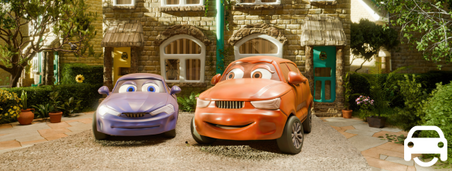Buying a Used Car? Here’s Every Check You Need to Make

Used Car Buying Checklist
Buying a used car is exciting - new wheels, new freedom, maybe even that dream car at a fraction of the cost. On the other hand, there’s the nagging worry: what if I get it wrong?
That’s why having a used car buying checklist is so important. It keeps you from getting carried away by the excitement and helps you spot the little red flags so you’re not committing to headaches further down the line.
From checking the car’s paperwork, MOT and service history, to running DVLA and vehicle history checks, there are several key steps that should be part of your checklist - and we’ll cover these so you can feel more confident when buying second hand.
Why Use a Checklist When Buying a Used Car?
It’s tempting to rush the process - maybe you’ve spotted what looks like a great deal on Auto Trader, or you’re confident the garage you’re buying from is trustworthy. But here’s the truth: skipping essential checks can lead to expensive mistakes. Hidden accident damage, outstanding finance, or even stolen vehicles can leave unsuspecting buyers facing serious trouble.
A checklist for buying a used car helps you:
- Avoid scams
- Spot red flags early
- Protect your money and your safety
- Avoid unnecessary stress
So, let’s dive into our used car buying guide for UK drivers and make sure you know exactly what to check before you buy.
Essential Paperwork and Legal Checks
Before you even pop the bonnet, get the paperwork right. This is the foundation of every car paperwork checklist UK buyers should follow.
V5C Logbook (Registration Certificate): The seller should be listed as the registered keeper, and their name and address must match their ID. If anything seems off, or they make excuses, it’s best to walk away.
MOT history check (DVLA): You can check this online for free. Look for consistent mileage increases and note any “advisories” as these could become expensive repairs later on.
Service history and invoices: A stamped service book or collection of receipts shows the car has been properly maintained. No history often means no maintenance, which can be a red flag.
Finance / HPI check: Cars with outstanding finance technically belong to the finance company. Without this check, you risk buying a car that could be repossessed.
Mileage verification: Compare the odometer reading with MOT history. Any large jump, or unusually should raise questions - honesty is key when it comes to a car’s past.
Exterior Checks to Make on a Used Car
Let’s continue our checklist when buying a used car. This is where you roll up your sleeves. And don’t worry - even if you’re not a mechanic, a few simple checks can reveal a lot.
A used car inspection in the UK starts with the exterior:
Bodywork: Walk slowly around the car and look closely at every panel. Scratches and small dents are expected with age, but mismatched paint or uneven panels can indicate previous accident repairs. Keep an eye out for rust, especially around wheel arches, sills, and under the doors — it spreads quickly and can affect the car’s structural strength.
Tyres: Check that the tread depth is at least 1.6mm across the middle (the legal minimum in the UK). Uneven wear patterns could point to suspension or wheel alignment issues that may require repair.
Lights, mirrors, windscreen: These might seem minor, but they’re essential for safety and MOT compliance. Make sure all lights work, mirrors aren’t cracked, and the windscreen is free from chips or damage that could worsen over time.
Pro Tip: Always inspect the car in daylight and dry weather. Rain or poor lighting can easily hide scratches, dents, and imperfections that you’ll only notice later.
Interior Checks Before You Buy
Next up, it’s time to hop inside for your car interior checks.
Not sure what to check inside a used car? Focus on these key areas:
Dashboard lights: When you turn the key or start the ignition, all warning lights should briefly illuminate, then switch off. If any lights stay on, such as the engine, airbag, or ABS indicators, it’s a sign something may need attention.
Seats, Seatbelts, and Airbags: Buckle up and check seatbelts for smooth retraction and secure locking. Airbags should appear undisturbed and properly fitted. Worn or sagging seats aren’t dangerous, but they can indicate high mileage or heavy use, which might affect comfort on longer journeys.
Air Conditioning, Radio, and Controls: It might sound minor, but test air con, heating, and entertainment systems. Faulty fans or broken buttons are annoying to fix and can impact everyday driving.
💡 Pro Tip: Take a few minutes to adjust mirrors, test windows, and check for unusual smells or dampness, which could point to leaks or hidden water damage.
Under the Bonnet: Mechanical Checks
You don’t need to be a mechanic to carry out a few simple under-the-bonnet checks. Taking a few minutes here can help you spot early warning signs and avoid expensive surprises later.
Oil & fluids: Check that all fluids are topped up and clean. The oil should be smooth, thick sludge or milky residue could point to engine issues. Also inspect coolant and brake fluid levels, as low fluids may indicate leaks or poor maintenance.
Timing belt or chain: Ask the seller when the timing belt or chain was last replaced. It’s one of the most important (and expensive) maintenance items, missing a replacement interval can cause catastrophic engine damage.
Battery: Take a quick look at the battery terminals for any signs of corrosion or rust. Ask how old the battery is; most last around four to five years before needing replacement.
Leaks or Unusual Smells: If you spot oil or fuel leaks, or smell petrol or burning oil, it’s best to walk away. These are signs of underlying mechanical problems that could be costly to repair.
Pro Tip: Bring a torch or phone light with you. A quick look under the engine bay in good light can help reveal leaks, corrosion, or damaged hoses that might not be obvious at first glance.
Test Drive Checklist
Never buy a used car without taking it for a test drive. It’s your chance to see how the car runs in real-world conditions, and using our test drive used car checklist helps you spot potential problems before they become your problem.
Here’s what to check when test driving a used car:
Engine start: Start the engine from cold if possible. It should fire up quickly and run smoothly without excessive smoke or rattling noises. Any hesitation, grinding, or smoke could suggest underlying engine or ignition issues.
Steering, suspension, braking: The car should feel responsive, stable, and smooth to handle. Listen for knocking, squeaking, or clunking noises over bumps or while turning, these could indicate worn suspension parts or steering problems.
Clutch and gearbox: Check that gears engage cleanly and shift easily. The clutch bite point should feel natural, not too high or low. If the clutch slips or the gears grind, it may be a sign of wear or costly repairs ahead.
Acceleration & noise levels: The engine should accelerate smoothly and evenly. There shouldn’t be any rattles, vibrations, or clunks when you press the throttle. Pay attention to how the car feels at different speeds, a noisy cabin or juddering engine can hint at deeper mechanical issues.
Final Checks Before Purchase
Before you hand over any money, make sure you’ve completed these final steps. These quick but crucial checks can protect your wallet, and your peace of mind.
Number of Previous Owners:
A car that’s had multiple owners often depreciates faster and may have a more varied maintenance history. Fewer owners usually mean the vehicle’s been better cared for and easier to trace in terms of service records.
VIN Number (Vehicle Identification Number):
Check that the VIN on the car matches the one listed on the V5C logbook and etched on the vehicle (typically on the dashboard or door frame). Any mismatch could mean the car has been cloned or stolen.
Road Tax and Insurance Group:
Before you buy, check the car’s road tax band and insurance group rating. Both affect your ongoing running costs, so it’s worth confirming affordability before committing to a purchase.
Warranties or guarantees:
If buying from a dealer, ask what cover is included. With MotorEasy, you can add an extended warranty for peace of mind.
FAQs About Buying a Used Car
What documents do I need when buying a used car in the UK?
You’ll need all the car’s paperwork, including the V5C logbook, MOT certificate and service history from the buyer. As for you, you’ll need your driving licence and insurance, and you’ll need to tax the vehicle immediately after purchase, too.
What is the most important thing to check before buying a used car?
The paperwork. If the legal side doesn’t add up, nothing else matters.
How do I check if a car has outstanding finance?
Use an HPI check. This tells you if the car is on finance, stolen, or written off.
Should I get a used car inspected before buying?
A professional inspection can flag hidden issues you might miss - so it can be worth asking a professional to tag along with you when buying a second hand car.
Can I return a used car if there’s a problem?
If you buy from a dealer, you usually have some consumer rights. Private sales are “buyer beware,” so checks are even more important.




